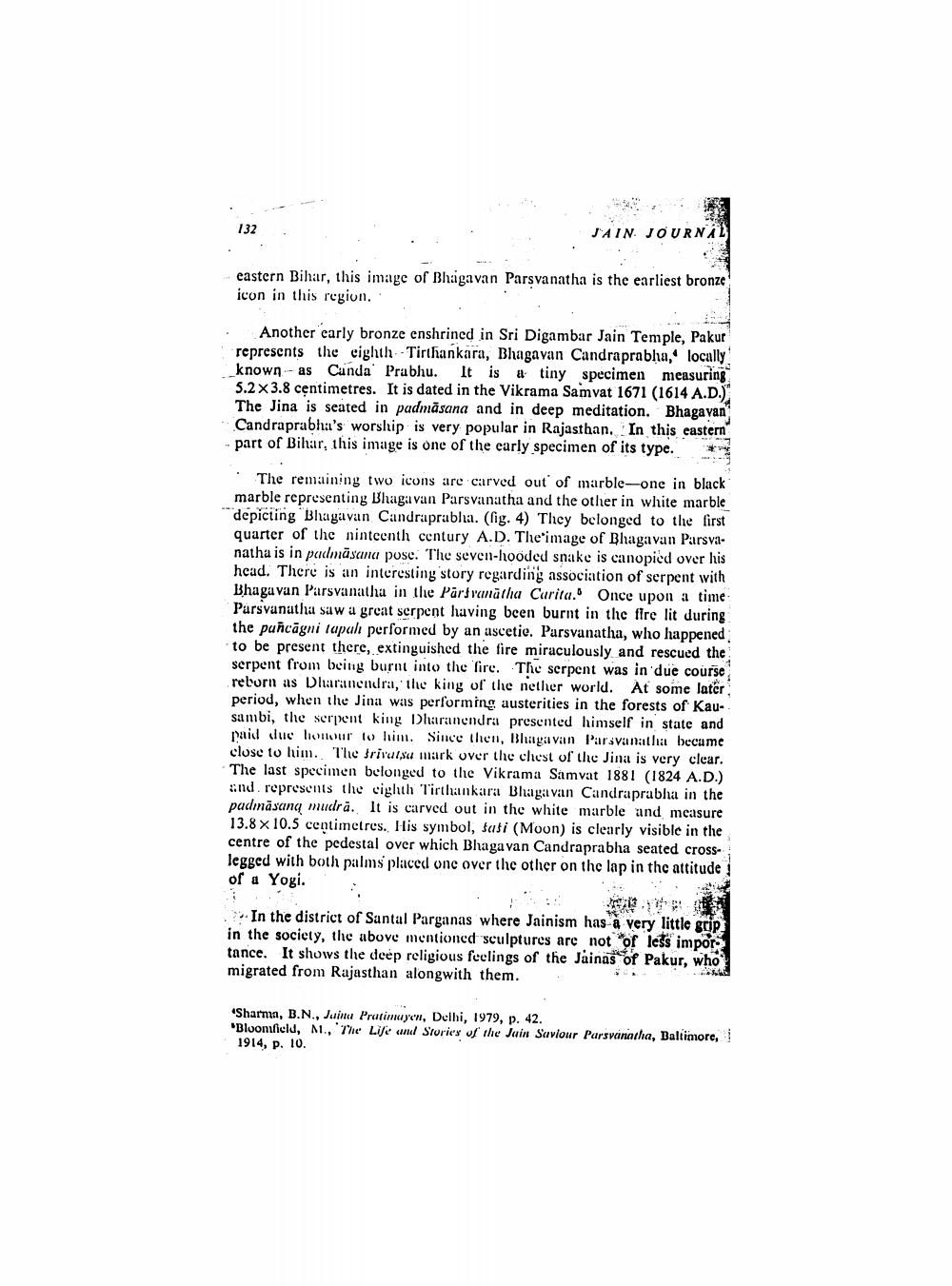Book Title: Some Unpublished Jaina Images Of Bihar Author(s): Ajoy Sinha Publisher: Ajoy Sinha View full book textPage 6
________________ 132 . JAIN JOURNAL eastern Bihar, this image of Bhaigavan Parsvanatha is the earliest bronze icon in this region. . Another early bronze enshrined in Sri Digambar Jain Temple, Pakur represents the cighth Tirthankara, Bhagavan Candraprabha, locally known as Canda Prabhu. It is a tiny specimen measuring 5.2 x 3.8 centimetres. It is dated in the Vikrama Samvat 1671 (1614 A.D.) The Jina is seated in padmāsana and in deep meditation. Bhagavan Candraprabha's worship is very popular in Rajasthan. In this eastern part of Bihar, this image is one of the early specimen of its type. The remaining two icons are carved out of marble--one in black marble representing Bhagavan Parsvanatha and the other in white marble depicting Bhagavan Candraprabha. (fig. 4) They belonged to the first quarter of the ninteenth century A.D. The image of Bhagavan Parsvanatha is in pacmāsana pose. The seven-hooded snake is canopied over his head. There is an interesting story regarding association of serpent with Bhagavan Parsvanatha in the Parfranātha Carita. Once upon a time Parsvanatha saw a great serpent having been burnt in the fire lit during the pañcāgni lapal performed by an ascetie. Parsvanatha, who happened to be present there, extinguished the fire miraculously and rescued the serpent from being burnt into the fire. The serpent was in due course reborn as Dharanendral, the king of the nether world. At some later period, when the Jina was performing austerities in the forests of Kausumbi, the serpent king Dhuranendra presented himself in state and paid duc lonour to him. Since then, Bhagavan Parsvanatha became close to him. The frivursu mark over the chest of the Jina is very clear. The last specimen belonged to the Vikrama Samvat 1881 (1824 A.D.) and represents the cighth Tirthankara Bhagavan Candraprabha in the padmāsana mudra. It is carved out in the white marble and measure 13.8 x 10.5 centimetros. His symbol, sasi (Moon) is clearly visible in the centre of the pedestal over which Bhagavan Candraprabha seated crosslegged with both palms placed onc over the other on the lap in the attitude of a Yogi. In the district of Santal Parganas where Jainism has a very little grip in the society, the above mentioned sculptures are not of less impor tance. It shows the deep religious feelings of the Jainas of Pakur, who migrated from Rajasthan alongwith them. - *** 'Sharma, B.N., Jainu Pratimayen, Delhi, 1979, p. 42. 'Bloomfield, M., The Life and Stories of the Jain Saviour Parsvanatha, Baltimore, 1914, p. 10.Page Navigation
1 ... 4 5 6 7 8
